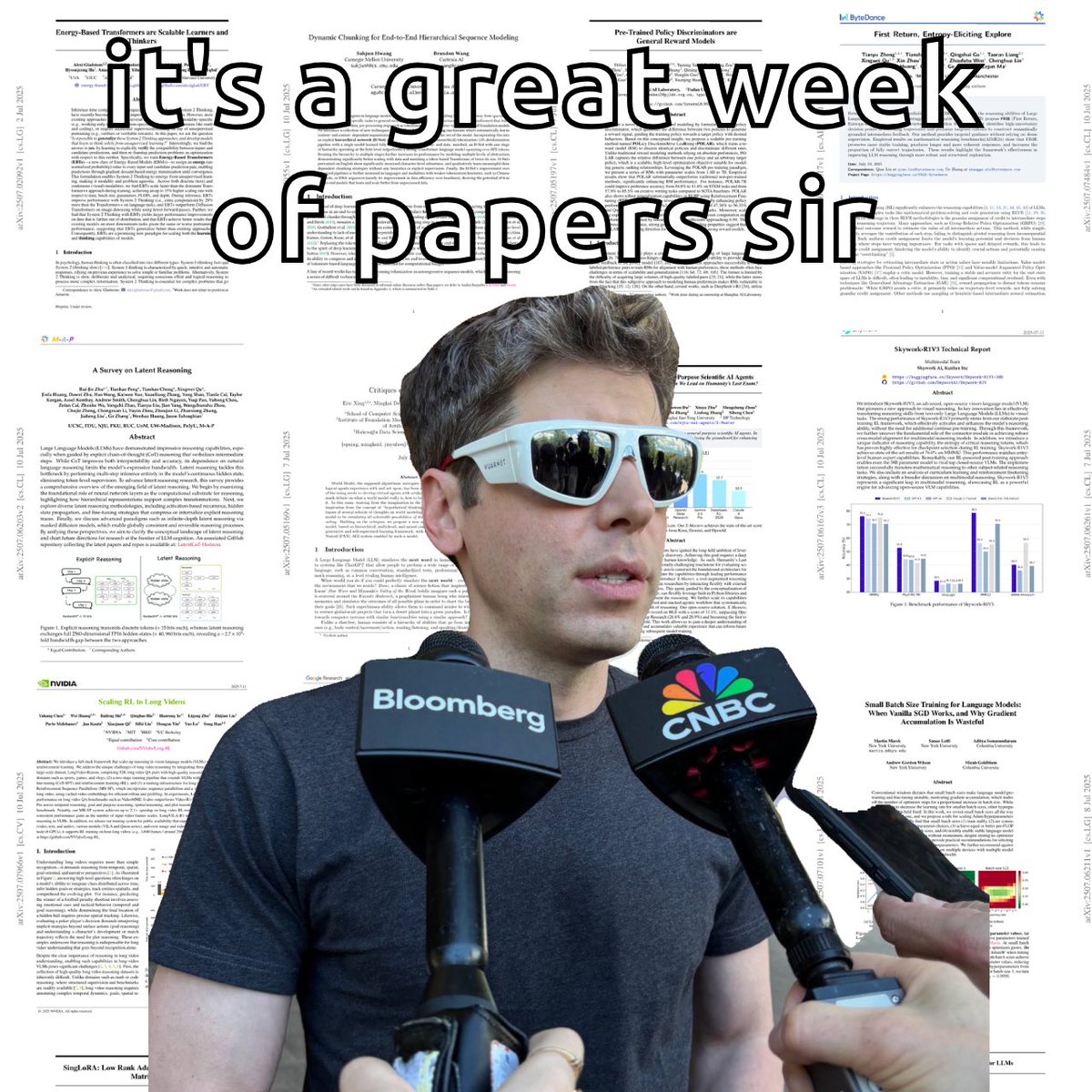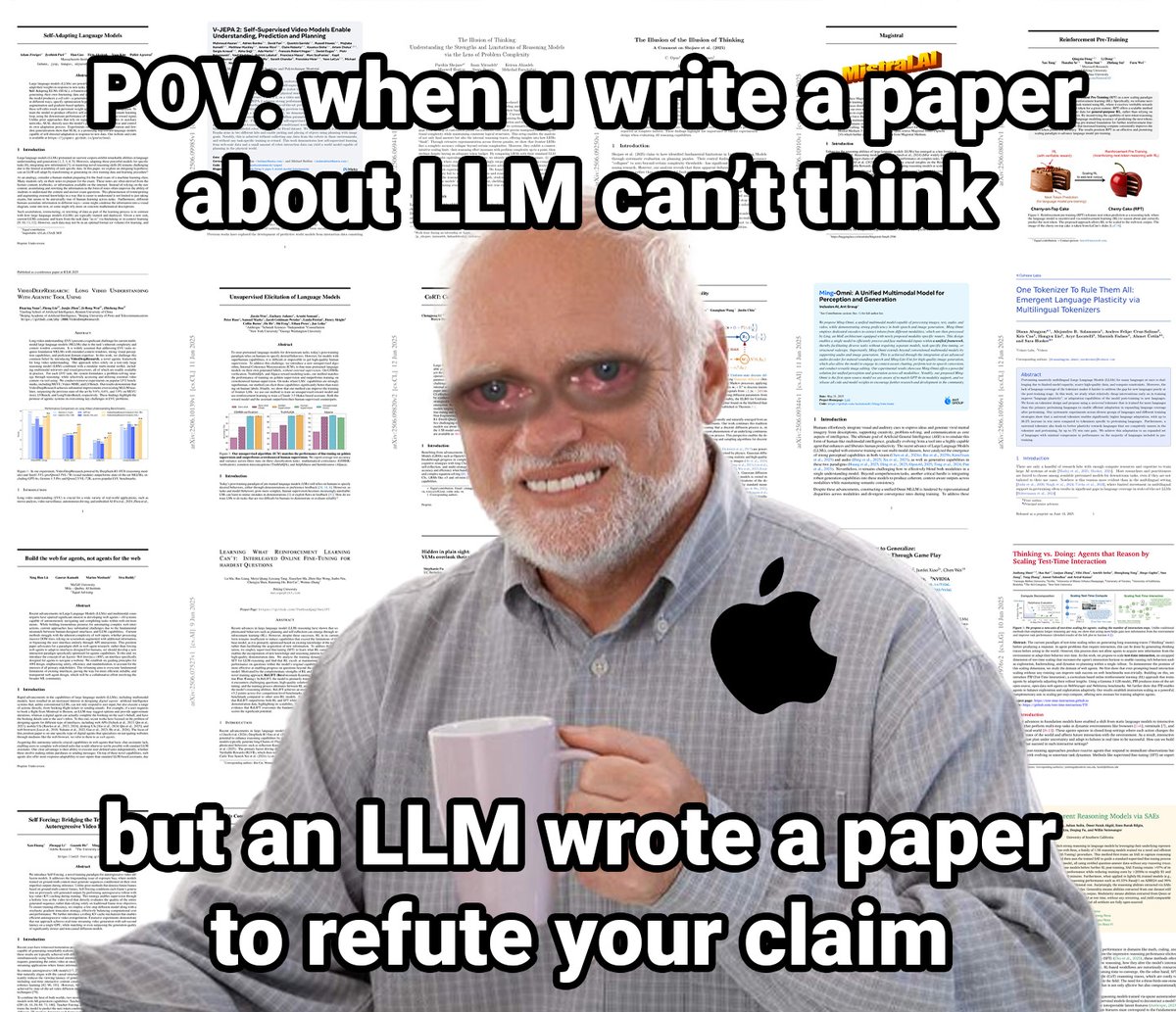
covering the latest AI & LLM research /// see "highlights" for all previous weekly threads /// building the best AI paper search engine @findmypapersai
3 subscribers
How to get URL link on X (Twitter) App


 Energy-Based Transformers are Scalable Learners and Thinkers
Energy-Based Transformers are Scalable Learners and Thinkers

 Self-Adapting Language Models
Self-Adapting Language Models

 Spurious Rewards: Rethinking Training Signals in RLVR
Spurious Rewards: Rethinking Training Signals in RLVR

 Absolute Zero: Reinforced Self-play Reasoning with Zero Data
Absolute Zero: Reinforced Self-play Reasoning with Zero Data

 BitNet b1.58 2B4T Technical Report
BitNet b1.58 2B4T Technical Report

 Inference-Time Scaling for Generalist Reward Modeling
Inference-Time Scaling for Generalist Reward Modeling

 Transformers without Normalization
Transformers without Normalization

 LLM Pretraining with Continuous Concepts
LLM Pretraining with Continuous Concepts

 Demystifying Long Chain-of-Thought Reasoning in LLMs
Demystifying Long Chain-of-Thought Reasoning in LLMs

 Do generative video models learn physical principles from watching videos?
Do generative video models learn physical principles from watching videos?
 OpenAI o1 System Card
OpenAI o1 System Card

 Sparse Crosscoders for Cross-Layer Features and Model Diffing
Sparse Crosscoders for Cross-Layer Features and Model Diffing

 Q-Sparse: All Large Language Models can be Fully Sparsely-Activated
Q-Sparse: All Large Language Models can be Fully Sparsely-Activatedhttps://x.com/realHongyu_Wang/status/1813112679734911169


https://x.com/JeffDean/status/1760291769252762110
